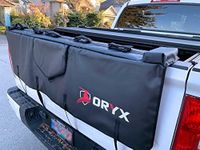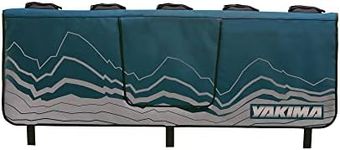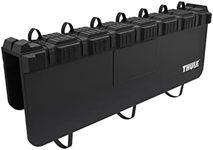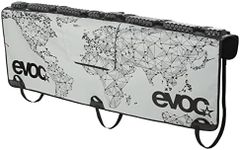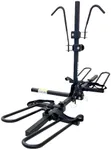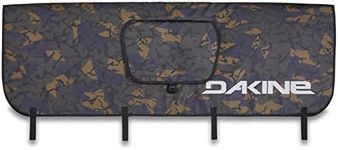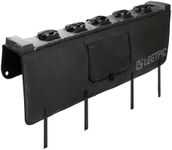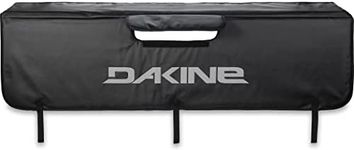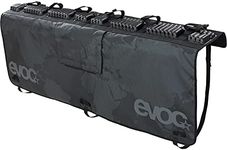Buying Guide for the Best Tailgate Pad
Choosing the right tailgate pad is important if you want to transport bikes or other gear safely and conveniently in the bed of your pickup truck. A tailgate pad protects both your vehicle and your equipment from scratches and damage during transport. To find the best fit, you should consider the size of your truck, the number of bikes or items you want to carry, and the features that make loading and unloading easier. Understanding the key specifications will help you make a choice that matches your needs and ensures your gear stays secure and your truck stays protected.Size and FitSize and fit refer to how well the tailgate pad matches the width and shape of your truck’s tailgate. This is important because a pad that is too small won’t provide enough protection, while one that is too large may not stay secure. Tailgate pads usually come in sizes like 'small' for mid-size trucks and 'large' for full-size trucks. To pick the right one, measure your tailgate and check the pad’s dimensions. If you have a compact truck, go for a smaller pad; for larger trucks, choose a bigger one. Always make sure the pad covers the entire tailgate surface for maximum protection.
Bike CapacityBike capacity tells you how many bikes the pad can hold securely. This is important if you often travel with friends or family and need to carry multiple bikes. Pads typically range from holding 2 to 7 bikes. If you usually ride solo or with one other person, a lower-capacity pad is enough. For group rides or family outings, look for a pad with higher capacity. Think about your usual riding group size to decide what’s best for you.
Padding ThicknessPadding thickness is about how much cushioning the pad provides between your tailgate and your bikes. Thicker padding offers better protection against scratches and dents, which is especially important if you have expensive bikes or want to keep your truck in top condition. Pads with thinner cushioning are lighter and easier to handle but may not protect as well. If you’re concerned about damage or carry heavy bikes, choose a pad with thicker padding. For lighter use, thinner pads can be sufficient.
Attachment SystemThe attachment system refers to how the pad secures to your tailgate, usually with straps or buckles. This is important because a secure fit keeps the pad in place and your bikes safe during transport. Some systems are quicker and easier to use, while others offer a tighter, more secure fit. If you want convenience and quick setup, look for simple strap systems. If you prioritize security and stability, choose pads with multiple straps or more robust buckles. Consider how often you’ll be removing and reinstalling the pad to guide your choice.
Bike Separation and Protection FeaturesThese features include individual bike slots, Velcro straps, or bumpers that keep bikes separated and prevent them from rubbing against each other. This is important to avoid scratches and damage to your bikes during transport. Some pads have clear, defined slots for each bike, while others use simple straps. If you have high-end bikes or want to avoid any contact between them, look for pads with individual separation features. For casual use, basic straps may be enough.
Tailgate Handle AccessTailgate handle access means whether the pad allows you to open and close your tailgate easily without removing the pad. This is important for convenience, especially if you need to access your truck bed frequently. Some pads have a flap or cutout for the handle, while others cover it completely. If you use your truck bed often, choose a pad with easy handle access. If you rarely need to open the tailgate while the pad is on, this feature may be less important.
Weather ResistanceWeather resistance refers to how well the pad stands up to rain, sun, and dirt. This is important because your pad will be exposed to the elements, and you want it to last. Pads made from water-resistant or UV-resistant materials will hold up better over time. If you live in a rainy or sunny area, or plan to leave the pad on your truck for long periods, prioritize weather-resistant materials. For occasional use in mild conditions, this may be less critical.
